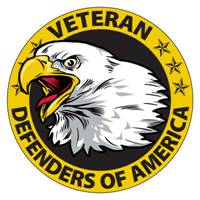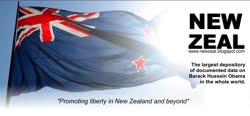The Pilgrims were a Christian
congregation that fled from England in order to avoid religious persecution from
the Church of England. In June 1619, the Pilgrim’s congregation obtained a land
patent from the London Virginia Company, allowing them to settle in the New
World at the mouth of the Hudson River. They chartered a private sailing ship
called the Mayflower to make the voyage.
The Mayflower was
originally destined for the mouth of the Hudson River, near present-day New York
City, at the northern edge of England's Virginia colony, which itself was
established with the 1607 Jamestown Settlement. However, the Mayflower went off
course as the winter approached, and remained in Cape Cod Bay. The Mayflower
made an attempt to sail south to the designated landing site but ran into
trouble in a shallow area of shoals between Cape Cod and Nantucket Island. With
winter approaching and provisions running dangerously low, the passengers
decided to return north and abandon their original landing
plans.
The Mayflower anchored at Provincetown Harbor on November
11. The group remained on board the ship through the next day, a Sunday, for
prayer and worship. The immigrants finally set foot on land at what would become
known as Plymouth Rock near Provincetown on November 13,
1620.

Edward Percy Moran (American artist, 1862-1935)
Pilgrim's Landing (early 1900s), oil on canvas, 23" x 29". Pilgrim Hall Museum,
Plymouth, Mass.
During the first winter in the
New World, the Mayflower colonists suffered greatly from diseases like scurvy,
lack of shelter and general conditions on board ship. 45 of the 102 emigrants
died the first winter and were buried on Cole's Hill. Additional deaths during
the first year meant that only 53 people were alive in November 1621 to
celebrate the harvest feast which modern Americans know as "The First
Thanksgiving." Of the 18 adult women, 13 died the first winter while another
died in May. Only four adult women were left alive for the
Thanksgiving.
The Pilgrims biggest concern
was attack by the local Native American Indians. But the Patuxets were a
peaceful group and did not prove to be a threat.
On
March 16, 1621, what was to become an important event took place, an Indian
brave walked into the Plymouth settlement. The Pilgrims were frightened until
the Indian called out "Welcome, Englishmen" (in English!). His name was Samoset
and he was the first Native American to make contact with the Pilgrims. Samoset
strolled straight through the middle of the encampment at Plymouth Colony and
greeted them in English, which he had begun to learn from an earlier group of
Englishmen fishermen.
Samoset was a member of an
Abenaki tribe that resided at that time in what is now Maine, Samoset was a
sagamore (subordinate chief) of his tribe and was visiting a local Indian chief.
After spending the night with the Pilgrims Samoset left the colony. He soon
returned with another Indian named Squanto who spoke better English. Squanto
told the Pilgrims of his voyages across the ocean and his visits to England and
Spain. It was in England where he had learned
English.
Squanto's importance to the Pilgrims was
enormous and it can be said that they would not have survived without his help.
It was Squanto who taught the Pilgrims how to tap the maple trees for sap. He
taught them which plants were poisonous and which had medicinal powers. He
taught them how to plant the Indian corn by heaping the earth into low mounds
with several seeds and fish in each mound. The decaying fish fertilized the
corn. He also taught them to plant other crops with the
corn.
The harvest in October was very successful and
the Pilgrims found themselves with enough food to put away for the winter. There
was corn, fruits and vegetables, fish to be packed in salt, and meat to be cured
over smoky fires.
The Pilgrims had much to celebrate,
they had built homes in the wilderness, they had raised enough crops to keep
them alive during the long coming winter, they were at peace with their Indian
neighbors. They had beaten the odds and it was time to
celebrate.
The Pilgrim Governor William Bradford
proclaimed a day of thanksgiving to be shared by all the colonists and the
neighboring Native Americans. They invited Squanto and the other Indians to join
them in their celebration. Their chief, Massasoit, and 90 braves came to the
celebration which lasted for 3 days. They played games, ran races, marched and
played drums. The Indians demonstrated their skills with the bow and arrow and
the Pilgrims demonstrated their musket skills. Exactly when the festival took
place is uncertain, but it is believed the celebration took place in
mid-October.
























No comments:
Post a Comment
No foreign language comments allowed. English only. If you cannot access the comments window send me an email at Oldironsides@fuse.net.